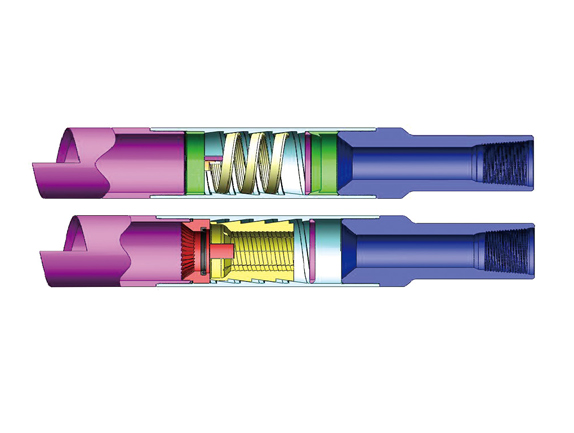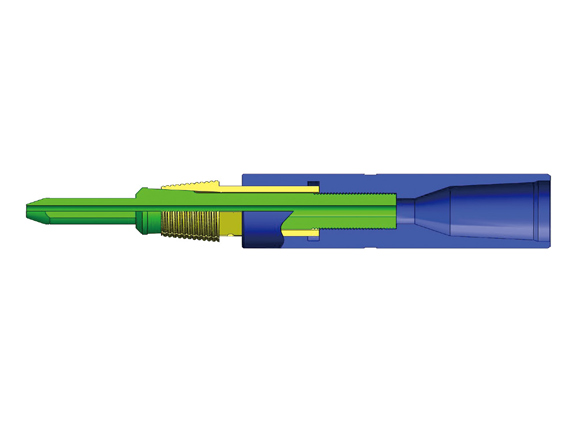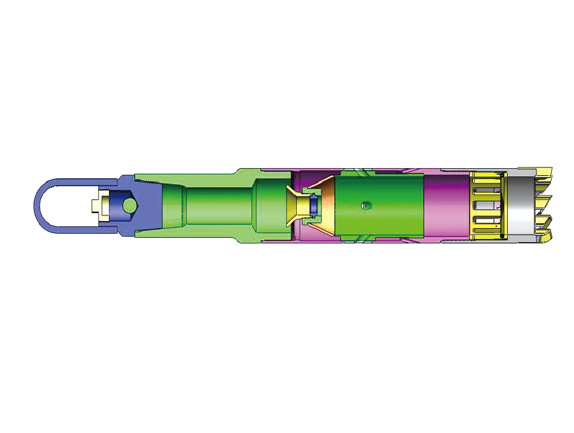 Releasing and Circulating Overshot
Releasing and Circulating Overshot
 Lifting-Lowering and Releasing Overshot
Lifting-Lowering and Releasing Overshot
 Sliding Block Spear
Sliding Block Spear
 Short Catch Releasing Overshot
Short Catch Releasing Overshot
 Releasing Spear
Releasing Spear
 A Type Multi-Function Spear
A Type Multi-Function Spear
 Valving Spear of Workover
Valving Spear of Workover
 Taper Tap
Taper Tap
 Die Collar
Die Collar
 Releasing and Reversing Overshot
Releasing and Reversing Overshot
 Lift Releasing and Reversing Overshot
Lift Releasing and Reversing Overshot
 Releasing and Reversing Spear
Releasing and Reversing Spear
 Reversing Sub
Reversing Sub
 Reverse Circulation Junk Baskets
Reverse Circulation Junk Baskets
 Junk Subs
Junk Subs
Salvage tools are the most widely used special tools for oil and water well overhaul construction, the most frequently used, and the most complete variety and specifications.
There are many types and specifications of fishing tools like taper tap fishing tool and so on. According to the types of falling objects in the well, they can be divided into five categories: pipe fishing tools, rod fishing tools, rope fishing tools, logging instrument fishing tools, and small object fishing tools. If classified according to the structural characteristics of the knot tool, it can be divided into six categories: cone, spear, tube, hook, basket, and other categories.
(Baidu Encyclopedia) During drilling and completion and downhole operations, the drill pipe, drill collar, casing, tubing string is stuck or broken, the drill bit cone is dropped, the logging instrument or cable is stuck, the cable wire rope is pulled and sealed Separator is stuck, sand set, severe leak, well collapse, blowout, etc. cause normal drilling, workover and completion operations to be interrupted. Fishing tools or special measures are required to remove the leak, collapse, jam, spray to restore normal. operation. The operation and process of removing leaks, collapses, jams, and sprays is called "fishing." If you want to learn more about the oilfield drilling equipment, please contatc us!
1.According to salvage tubing
Soft fishing: steel wire (rope) / cable
Hard fishing: tubing / drill pipe / coiled tubing
2. According to the occlusion relationship
Inward fishing: fishing spear / male cone / outer hook
Fishing out: fishing tube / female cone / inner hook / fishing basket
Fishing out: Retractable fishing barrel, female cone, inner hook, three ball fishing device, etc.
Inward fishing: male cone, retractable fishing spear, casing fishing spear, outer hook, inverted buckle, fishing spear.
Others: strong magnetic salvage, reverse circulation strong magnetic salvage, salvage cup, reverse circulation strong magnetic salvage basket, reverse circulation, circular salvage basket.
Oil well fishing tools are specialized equipment used to retrieve lost or stuck equipment or debris from oil wells. There are several types of fishing tools used in the oil and gas industry, including:
Overshot: An overshot is a tool used to grip and retrieve a fish (lost equipment) from a well. It consists of a set of jaws that are connected to a rope or wireline. The overshot is lowered into the well and when the jaws are positioned around the fish, the tool is lifted to the surface.
Junk Basket: A junk basket is a tool used to collect debris from the bottom of the well. It consists of a cylindrical basket that is lowered into the well and rotated to collect debris. The basket is then lifted to the surface to remove the debris.
Spear: A spear is a tool used to retrieve a fish from a well. It consists of a sharp, pointed instrument that is used to pierce the fish. The spear is then pulled to the surface, along with the fish.
Grapple: A grapple is a tool used to retrieve a fish from a well. It consists of a set of hooks that are lowered into the well. When the hooks latch onto the fish, the grapple is lifted to the surface.
Mill: A mill is a tool used to grind and remove metal objects from the well. It consists of a series of rotating cutting blades that are used to grind and remove the metal.
Casing Scraper: A casing scraper is a tool used to clean the inside of the well casing. It consists of a series of scraping blades that are used to remove scale and other debris from the inside of the casing.
These are just a few of the many types of oil well fishing tools used in the oil and gas industry. The specific tool used depends on the nature of the problem and the type of fish or debris that needs to be retrieved from the well.
Oilfield fishing tools are used to retrieve lost or stuck equipment from oil wells. These oilfield fishing tools are specialized devices that are designed to latch onto or grip the lost equipment and then extract it from the wellbore. The use of fishing tools is a critical part of the oil drilling and production process, as it allows companies to recover lost equipment, which can be very expensive to replace.
Fishing tools typically include a variety of devices, such as spears, overshots, and junk baskets. These tools are lowered into the wellbore on a wireline, which is a long, thin cable that is used to move equipment up and down the well. Once the fishing tool is in place, it is activated and used to latch onto the lost equipment.
The type of fishing tool that is used depends on the specific circumstances of the lost equipment. For example, if a drill bit is stuck in the wellbore, a spear may be used to grab onto it and pull it out. If a section of pipe is lost, an overshot may be used to clamp onto the pipe and lift it to the surface. If there is debris or other materials in the wellbore, a junk basket may be used to collect and remove them.
The use of oilfield fishing tools requires skilled operators who are trained in their use and capable of safely and effectively retrieving lost equipment. The process can be complex and time-consuming, but it is an essential part of maintaining the integrity of oil wells and ensuring that production continues uninterrupted.
Well drilling fishing tools are used in the oil and gas industry when equipment or debris becomes stuck or lost downhole during drilling, completion, or production operations. Fishing tools are designed to retrieve objects such as drill pipe, tubing, casing, or other downhole tools that have become stuck or lost in the wellbore.
Fishing operations are typically conducted when conventional techniques to free or remove the stuck equipment have failed, and the well cannot be completed or produced until the obstruction is removed. Well drilling fishing tools can be used to recover expensive downhole equipment, prevent costly well interventions, and minimize downtime.
 Call us on:
Call us on:  Email Us:
Email Us:  No. 235, Weigao Garden, Torch High tech Industrial Development Zone, Weihai City, Shandong Province, China
No. 235, Weigao Garden, Torch High tech Industrial Development Zone, Weihai City, Shandong Province, China